What's New
Displaying results 2881 - 2890 of 4914
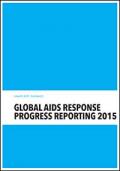
Resource | Guidelines,
The purpose of this document is to provide guidance to national AIDS programmes and partners actively involved in the country response to AIDS on use of core indicators to measure and report on the national response.
These guidelines have been developed to help countries collect data and report on their national HIV response as effectively as possible. In the section “Core indicators for Global AIDS Response Progress Reporting” readers will find pages devoted to each indicator, giving reasons for inclusion and methods for collecting, constructing and measuring the indicator. The indicator’s strengths and weaknesses are also discussed.
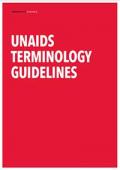
Resource | Guidelines,
Language shapes beliefs and may influence behaviours. Considered use of appropriate language has the power to strengthen the global response to the AIDS epidemic. That is why the Joint United Nations Programme on HIV/AIDS (UNAIDS) is pleased to make these guidelines to Preferred terminology freely available for use by staff members, colleagues in the Programme’s 11 Cosponsoring organizations and other partners working in the global response to HIV.
These guidelines are a living, evolving document that is reviewed on a regular basis. This revision of the 2011 edition has discarded a few terms and added new ones that are relevant to the global response to HIV and commonly used by UNAIDS. The same terms, grouped by subject headings, also are listed at the end of this document.

Resource | Fact Sheets,
The fact sheet 2015 show regional statistics, global HIV trends in 2014, regional HIV data in 2014, regional antiretroviral therapy in 2014.

Resource | Guidelines,
Through this guide, Unzip the Lips aims to promote the engagement of Key Affected Women and Girls, (KAWG) community networks and NGOs with the Convention on the Elimination of all Forms of Discrimination Against Women (CEDAW). The goal is to advocate for the needs and rights of these groups, and to ensure that their sexual reproductive health and rights are respected, protected and fulfilled.
In this guide, you will learn about the purpose of CEDAW. You will also learn about why and how to engage with this international agreement to further the sexual and reproductive health and rights of KAWG. This guide provides concrete information regarding your rights, and how to claim them at a national level.

Resource | Publications,
Jumping Hurdles: Access To HIV Health Services for Young Men Who Have Sex with Men and Young Transgender Persons in Asia and the Pacific presents the barriers in accessing health services and the recommended elements of youth friendly services shared during the 3rd Regional Consultation. It is a part of YVC’s advocacy efforts targeting healthcare providers and governments in selected countries in the region.
The discussion paper also strategically compliments the new WHO’s Consolidated guidelines on HIV prevention, diagnosis, treatment and care for key populations by offering an insight into the specific needs of the populations lying at the intersection of being young and being sexually marginalized.
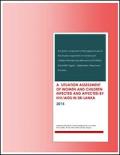
Resource | Publications,
Globally, AIDS-related illnesses are the leading cause of morbidity and mortality among women of reproductive age. In areas such as Western and Central Europe and Australia, women account for a elatively low percentage of people living with HIV. However, in regions such as sub-Saharan Africa, South and South East Asia and the Caribbean, the percentage is significantly high.
HIV prevalence among women and children is relatively low in Sri Lanka compared to other Asian countries. Some of the factors that may be contributing to the low prevalence of HIV/AIDS among women in Sri Lanka are its cultural context that strongly emphasizes moral values, high literacy level, better health care and increased accessibility to health institutions including those for sexually transmitted infections (STIs) and PMTCT initiatives.
However, Sri Lanka is in midst of flourishing economic development and hence multiple social, cultural and economic changes are taking place in the country. In spite of this economic boom, there are certain dangers lurking beneath the surface. Risk of HIV/AIDS can be stated as one such important public health issue especially in relation to women and children.
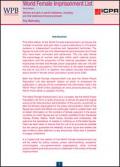
Resource | Publications,
This third edition of the World Female Imprisonment List shows the number of women and girls held in penal institutions in 219 prison systems in independent countries and dependent territories. The figures include both pre-trial detainees/remand prisoners and those who have been convicted and sentenced. The List also shows the percentage of women and girls within each national prison population and the proportion of the national population that are imprisoned females (the female prison population rate per 100,000 of the national population). The information is the latest available at the end of July 2015. In addition, this edition includes information about trends in female prison population levels since 2000.
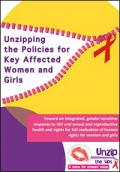
Resource | Fact Sheets,
In the Asia and the Pacific region, where the major of countries are experiencing concentrated HIV epidemics, HIV response has focused on specific groups most at-risk of HIV infection, including men who have sex with men (MSM), sex workers, people who use drugs and transgender people. However, the issues and needs of key affected women and girls are most often overlooked. While there has been been a scale-up of interventions focused on HIV prevention, treatment, care and support, the broader structural issues and ramifications the totem from gender inequality have not been adequately addressed.
Highlighting the vulnerabilities, needs, and rights of key affected women and girls within national HIV responses is not an easy task. Government in the region have committed to comprehensively focus on the populations identified as most at-risk. However, the specific needs of women and girls largely remain neglected in policy and program discussion. Gender inequality and all forms of gender-based violence can increase vulnerability to HIV and can also result in higher rates of HIV among women and girls.

Resource | Fact Sheets,
The purpose of the information series is to provide detailed guidance for lawmakers, policymakers, judiciaries, health service providers, civil society and other stakeholders, to support the adoption and effective implementation of laws, policies and programmes to respect, protect and fulfill women’s sexual and reproductive health and rights (SRHR). This panel will focus on discussing the legal standards underpinning sexual and reproductive health and rights, good practices from across regions in securing women’s sexual and reproductive health and rights, and identify opportunities to advance work and continued advocacy and engagement on this issue.
Often seen as a public health concern, the issue of maternal mortality and morbidity must also be understood as a matter of human rights. International human rights treaties have clarified States’ obligations in relation to maternal mortality and morbidity and recognized violations of women’s rights to life, to the highest attainable standard of health, and to equality and non-discrimination in this regard.

Resource | Tools,
The Minimum Initial Service Package (MISP) is a series of crucial actions required to respond to reproductive health needs at the onset of every humanitarian crisis. The MISP is not just kits of equipment and supplies; it is a set of activities that must be implemented in a coordinated manner by appropriately trained staff.





